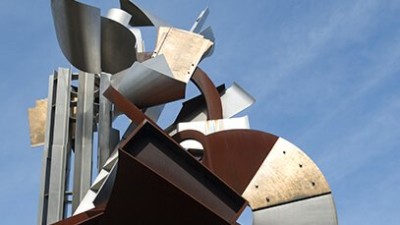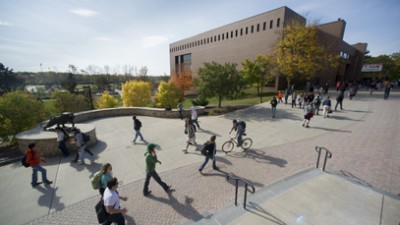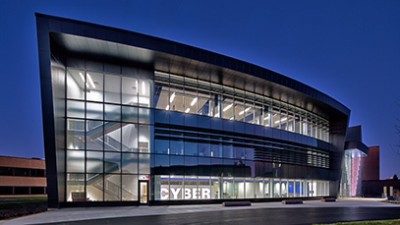Life after AI: past, present and future of complex systems.
In this talk, Navarro presented an overview of networked complex systems and the key facts about their modeling, analysis and control. She followed the natural dynamic evolution of her own work: from control systems to self-organizing adaptive networks of networks; and in the middle, the key area of hybrid dynamical systems and cyber-physical systems. The working of the human brain, self-organization in nature, and Alan Turing’s morphogenesis –having collaborated with the last Alan Turing’s student– are her paradigms.
In the age of AI without I, we need to challenge the current status quo with new ideas for the emerging systems we encounter. These systems are large-scale interconnected and interdependent, consisting of a large number of components which are connected in a non-regular way. Moreover, they are evolving, reconfigurable and dynamically adaptive to continuous and discontinuous changes produced by their multiple interactions with the environment and their own components – which are themselves complex dynamical systems.
At present, these adaptive mechanisms are still poorly understood, and pre-existing models and formal analysis tools are still fairly limited. This is chiefly due to the fact that the evolving and adaptive mechanisms of these systems arise from emergent behaviors that are not present and cannot be inferred from the properties of individual elements, because many of them depend on the topology and nature of their interactions. The modeling and analysis of these systems cannot be based on ‘only discrete’, statistical paradigms or data-driven techniques, inherited from the orthodoxy of the theory of computation, computational models and machine learning.
In the more than twenty years since the establishment of network science – the theory of complex networks – as a field of study, the tendency has been to use mathematical measurements to describe the topological properties of the network; mainly size, density and connectivity. This approach is more statistical than behavioral, and consequently has important limitations in the analysis of collective emergent dynamical properties, and network evolution and adaptation. Additionally, pre-existing models of complex networks fail to reproduce effectively key aspects of complex systems: switching and discontinuous dynamical processes and modularly varying goals. The solution must be sought in new mathematical modeling and analysis frameworks that consider discrete, continuous and dynamic elements. The multi-scale complexity of the task requires the transfer of methodologies from one field to another, breaking the boundaries of disciplines.
In this talk, Navarro presented an overview of networked complex systems and the key facts about their modeling, analysis and control. She followed the natural dynamic evolution of her own work: from control systems to self-organizing adaptive networks of networks; and in the middle, the key area of hybrid dynamical systems and cyber-physical systems. The working of the human brain, self-organization in nature, and Alan Turing’s morphogenesis –having collaborated with the last Alan Turing’s student– are her paradigms.
To learn more, watch Eva María Navarro López’s full talk at: https://www.youtube.com/watch?v=fwf83yYWy9g
About Professor Eva María Navarro López:
- Director of the School of Information at Rochester Institute of Technology
- Honorary Senior Research Fellow in Planning and Environmental Management, School of Environment, Education and Development, Manchester Urban Institute, University of Manchester, United Kingdom
- Core member of AI Mexico and Technolatinas
More details on Eva Navarro’s work and career can be found at www.evanavarro.org










